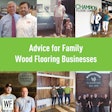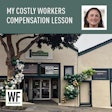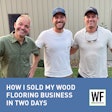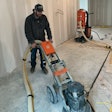
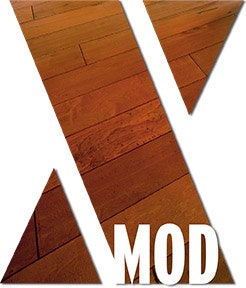
As if all that weren't enough, a growing number of carriers are leaving the market, diminishing the supply of competing policies and putting even more upward pressure on the price of this mandated benefit.It all boils down to a challenge for employers: Workers' compensation costs will go up.
The New Math
For business owners, the most immediate concern is the change in the x-mod. The portion of each claim that will flow into the experience rating formula at its full primary value will increase from $5,000 to $10,000. (See sidebar, "Calculating the New X-Mod.")
The reason for the change, says Peter Burton, senior division executive for state relations at the National Council on Compensation Insurance, Boca Raton, Fla., is the growing mismatch between the cost of claims and the premiums employers pay. "The split point portion of the experience rating formula has not been updated for 20 years, a period during which the average cost of a claim has tripled," says Burton. "So our actuaries looked at the program and saw it was out of balance."
Be that as it may, employers are sitting up and paying attention to the new math. "The x-mod changes are a big deal for employers," says Karl Ahlrichs, benefits consultant for Indianapolis-based insurance broker Gregory & Appel. Those employers with historically safe workplaces are going to be better off under the new system. Those with more frequent, higher-level claims will see their x-mods increase.
Carriers Leaving the Market
Another factor contributing to premium angst: a dwindling supply of carriers serving the market. "We are seeing a growing number of cases where multi-line (auto, property, umbrella, general liability) carriers are refusing to renew workers' comp insurance for an employer whose experience is unfavorable," says Mike Salazar, vice president and manager of client services at Gregory & Appel. The reason for carriers' growing reluctance is clear: "In a low interest rate environment, carriers cannot make up workers' comp losses with profits from property and other insurance products."
"Employers turned down by the multi-line outfits must apply to the single-line workers' comp insurance carriers," Salazar says. While the premiums at such carriers may not be much higher, there is another problem: Insurance carriers are becoming more judicious in what they underwrite, due to the rising costs of the workers' compensation system. "Single-line carriers are becoming more prone to accept only employers with strong claims management and risk control engineering," Salazar says.
Employers with poor histories may have to go to the state pools for coverage. "These are pools you do not want to go swimming in," Salazar says. "They are expensive. They charge standard premiums, adjusted for the employers' experience, plus a 20 to 25 percent surcharge. And you do not get the same service. For example, there is no engineer to come in and help you manage your safety program."
Hire Smart
Employers can take a variety of steps to keep workers' comp costs under control. Right out of the gate, vetting potential hires can obviate problems down the road. "Change your hiring practices to reflect your drive to get people who value safety," Ahlrichs says. "It's legitimate, for example, to ask safety-related questions that are work-related."
Also look at pre-hire assessments that can predict safety behaviors. It is valid to ask applicants to perform the activities required of a position, for example. "This is called a 'fit for duty' assessment," Salazar says. "Can the applicant do the job safely based on its requirements?"
Finally, conduct pre-employment drug screens. "That's a good way to avoid hiring people who will file workers' comp claims," Salazar says. "People who take drugs are more likely to have accidents, hurting themselves or others." Drug abusers, too, can suffer from poor health, and when they do have accidents, usually end up with more expensive claims.
However, don't fall into the trap of discrimination. It is improper, and illegal, to reject older applicants under the belief that they will have more accidents. "Older workers tend to work more safely than younger workers because they know the job better," says Burton.
It's true that older workers, when they do get injured, often have costlier injuries because they do not heal as quickly, Burton notes. However, this is offset by the fact that older workers tend to be higher paid, and this correlates to higher premiums collected in the workers' compensation system. "In the aggregate, older workers do not adversely affect the costs of workers' comp," Burton says.
Install Safety Programs
Given that the x-mod rating is based on an employer's accident record, it is wise to put an emphasis on workplace safety. Undertake a program of constant safety vigilance. "Hold a monthly meeting during which you review every single accident and near-miss accident," suggests Salazar. "Develop a corrective strategy so the accident does not happen again to that employee or another worker."
Many employers have redesigned their work stations and introduced stretching and exercise programs to assure good employee health. "Strains and sprains and slips and falls are the most common claims in the workers' comp industry," says Salazar. "They can be engineered out of the workplace."
Wellness programs can also play a role. "My sense is that there will emerge a body of data that links effective wellness programs with effective safety programs," Ahlrichs says. "The combination should produce a great result on workers' comp costs. Right now it's difficult to find supporting data, but it makes sense that a company with a focus on safety and well-being will gain a competitive advantage."
Back to Work
Another good technique is to have early return-to-work programs for employees who have been medically restricted by physicians. The trick here is to identify alternative positions for the injured worker.
"Suppose the worker has a medical restriction such as 'Can't lift more that 15 pounds,'" poses Salazar. "See if you have tasks that require lifting less than 15 pounds that you can assign the employee to while recovering."
There is an advantage to employees who cooperate, since most employers will compensate them at their normal salary but only provide partial compensation to workers who stay home. And there's another reason: Adjustors will suspend the workers' comp claims of employees who refuse temporary positions. "Workers' comp is there for people who cannot work for medical reasons, not for those who refuse to work," says Salazar.
Can't find a temporary position for an injured worker? Then keep open lines of communication with the home-bound person. "Once people are hurt really badly, they lose their desire to be part of a team," says Daniel C. Free, president and general counsel of Insurance Audit & Inspection, Indianapolis, Ind. "They feel forgotten and alone. Their spouses may be off at work while they are home with a broken leg. So we always tell our clients to visit them. Bring some fruit, talk for a half hour, show the person you care about him and want him back as soon as possible. That really helps. The little things that employers do make all the difference."
All of these steps together can communicate an attitude of caring. "Adopt policies that send the right message to your workforce," says Ahlrichs. "Your message should be this: 'We have a culture of safety. We attempt to control the variables so people do not get hurt. If you do get hurt we will get you back to work quickly.' When that message gets out, people who are prone to accidents will apply at another business that does not make safety a front-burner issue."
Get Help
Employers can seek help from consultants who specialize in workplace safety. "Some of these people go through special training," says Free, who suggests employers look for designations such as "Associate in Loss Control Management" or "Certified Safety Professional." Such people can teach employees good workplace practices, including lifting properly and avoiding shoulder injuries.
Consultants can make a big difference, but lay out parameters before the safety guru arrives. "One of the bad raps consultants get is that they make recommendations that are too expensive," says Free. So emphasize you want suggestions on improvement that are cost-neutral. "In such cases these improvements pay for themselves as losses go down."
A safe workplace can reduce your accident load and thus cap or even reduce your workers' comp premiums as your x-mod improves. That's all to the good. The cost of insurance is an integral component in competition, whether you produce a product or service.
Sidebar: Calculating the New X-Mod
Workers' compensation premiums are rising at a rate of between 2 and 5 percent in many states this year. One reason is a change in the calculation for the "experience modification factor," or x-mod, which is assigned to each employer. A higher x-mod translates into higher workers' compensation premiums.
The details of the change in the x-mod calculation can be found at the web site of the National Council on Compensation Insurance, www.ncci.com. Click on "Experience Rating Split Point" at the lower right corner of the screen.
When calculating an employer's x-mod, the states will look at three years of losses and payrolls. However, the most recent year is excluded. "The reason for that is that when a claim is made no one can predict the cost of the claim and set money aside to pay it," says Mike Salazar, vice president and manager of client services at Gregory & Appel in Indianapolis, Ind. "The reality is we have to see how the claim settles out."
Expect more costly x-mod adjustments ahead. "It is significant that the split point will continue to rise," says Salazar, describing the monetary limit on what can be labeled primary loss. "It will move to $15,000 and adjust for inflation in future years."
Rising costs in workers' comp seems to have the greatest effect on those employers without the resources to institute safety programs or that have especially high labor costs. "My experience has been that small businesses have a tough time absorbing these cost increases," says Salazar.
Calculating the New X-Mod
Workers' compensation premiums are rising at a rate of between 2 and 5 percent in many states this year. One reason is a change in the calculation for the "experience modification factor," or x-mod, which is assigned to each employer. A higher x-mod translates into higher workers' compensation premiums.
The details of the change in the x-mod calculation can be found at the web site of the National Council on Compensation Insurance, www.ncci.com. Click on "Experience Rating Split Point" at the lower right corner of the screen.
When calculating an employer's x-mod, the states will look at three years of losses and payrolls. However, the most recent year is excluded. "The reason for that is that when a claim is made no one can predict the cost of the claim and set money aside to pay it," says Mike Salazar, vice president and manager of client services at Gregory & Appel in Indianapolis, Ind. "The reality is we have to see how the claim settles out."
Expect more costly x-mod adjustments ahead. "It is significant that the split point will continue to rise," says Salazar, describing the monetary limit on what can be labeled primary loss. "It will move to $15,000 and adjust for inflation in future years."
Rising costs in workers' comp seems to have the greatest effect on those employers without the resources to institute safety programs or that have especially high labor costs. "My experience has been that small businesses have a tough time absorbing these cost increases," says Salazar.



















